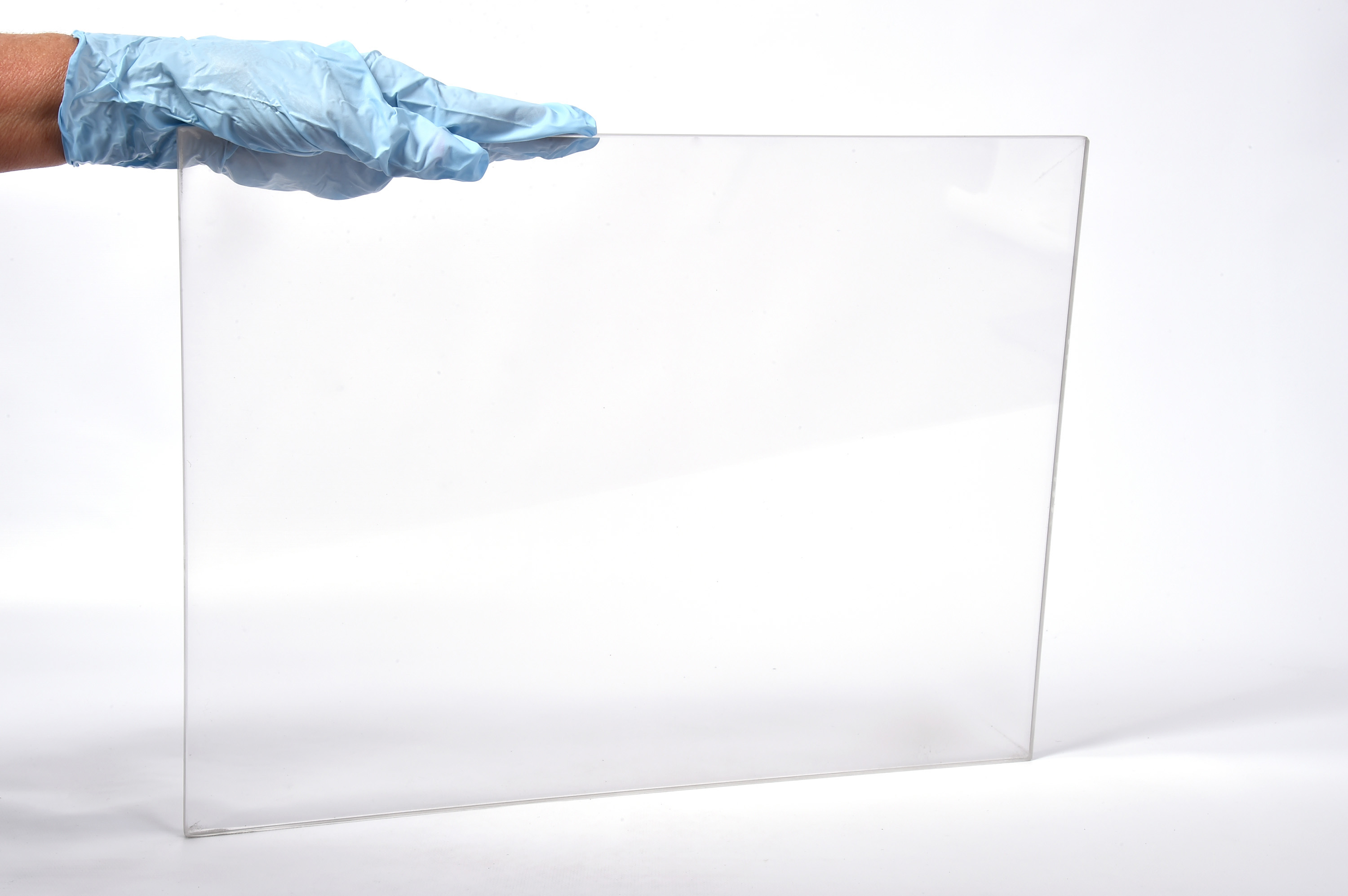
Researchers from the U.S. Naval Research Laboratory (NRL) have developed a new way of making transparent spinel by sintering ceramic powder.
Spinel is a magnesium aluminate mineral that us much tougher, stronger and harder than glass and can withstand sand and rain erosion.
When scientists first started trying to make spinel, they were using a crucible instead of a press. ‘A big problem with growing crystals is that you have to melt the starting powder at very high temperatures, over 2000°C,’ said Dr. Jas Sanghera, who led the research. ‘It's expensive to heat a material that high, and the molten material reacts with the crucible, and so if you're trying to make very high quality crystals, you end up [with a] huge amount of defects.’
That's why Sanghera and his colleagues turned to sintering. ‘You put the powder in [a hot press], you press it under vacuum, squash this powder together – and if you can do that right, then you can get rid of all the entrapped air, and all of a sudden it comes out of there clear-looking,’ he said.
NRL chemists have synthesized their own ultra-high purity spinel powder, and other synthetic versions are commercially available.

Scaling up
The sintering method also allows NRL to make optics in a number of shapes, conformal with the surface of an airplane or UAV wing, depending on the shape of the press.
The new low-temperature process uses a hot press which can be easily scaled up, the researchers suggest, since the size of the pieces is limited only by the size of the press. ‘Ultimately, we're going to hand it over to industry, so it has to be a scalable process,’ said Dr. Sanghera. In the lab, the researchers made pieces eight inches in diameter. Then it licensed the technology to a company who was able then to scale that up to much larger plates, about 30 inches wide.

Spinel has unique optical properties, not only can you see through it, but it allows infrared light to go through it. That means the military, for imaging systems, can use spinel as the window because it allows the infrared light to come through. NRL is also looking at spinel for the windows on lasers operating in maritime and other hostile environments. The spinel NRL makes is a polycrystalline material, or a lot of crystal particles all pressed together. Whereas with glass, a crack that forms on the surface will go all the way through, spinel might chip but it won't crack.
NRL is also looking at spinel (and other materials) for next generation lasers. NRL has transitioned both types of laser materials and applications to industry.
This story is reprinted from material from NRL, with editorial changes made by Materials Today. The views expressed in this article do not necessarily represent those of Elsevier.


